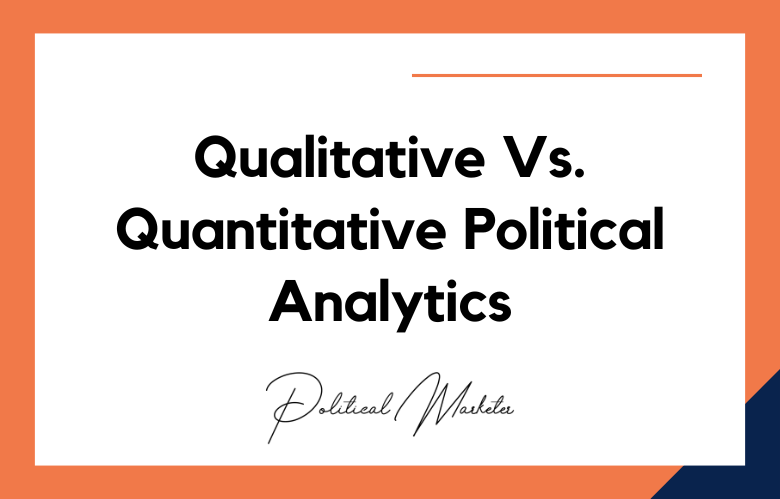Politics can often be a game of manipulation and deception. One tactic that has gained popularity in recent years is dog whistling.
This strategy might seem innocuous, but it can influence public opinion. We will explore what exactly dog whistling is, how it works, and how it can impact our society and political landscape.
What is Dog Whistling?
Dog whistling refers to using coded language to convey a message to a specific group of people without alerting others to the news.
These messages often contain hidden meanings or appeals to prejudice, such as racism, sexism, or homophobia.
Rather than openly espousing these views, the speaker uses language that expertly skirts around the issue, triggering a response from the intended audience while avoiding accountability for their true intentions.
How Does the Dog Whistling Political Strategy Work
Dog whistling works by using subtle cues in language that only those with a shared cultural or ideological background would understand.
These cues can be words or phrases that invoke a particular image or concept, as well as symbolic gestures or imagery. Using these cues, the speaker can create a sense of solidarity with the intended audience and make them feel they are part of a like-minded group.
What Impact Does it Have?
The Impact of dog whistling can be significant, as it can often mold public opinion and sway political outcomes. Dog whistling can create a sense of fear, division, and moral outrage that can mobilize people toward a particular political agenda.
Dog whistling can be a potent force for maintaining the existing power dynamic in society. It uses language that reinforces the beliefs and prejudices of those already in positions of power.
How can We Combat Dog Whistling?
The fight against dog whistling starts with awareness. By knowing what dog whistling is and how it works, we can better recognize when it occurs. This recognition can help us not only to identify instances of dog whistling but also to call out those who perpetrate it.
We can also take steps to educate ourselves and others on the cultural and social contexts that allow dog-whistling to thrive and work to change those dynamics.
Understanding Dog Whistling Political Strategy and Its Impact
Strategic messaging is crucial to the success of any political campaign. One such tactic commonly used is dog-whistling, which involves using coded language to communicate with specific groups of voters. It triggers certain ideas and emotions while retaining plausible deniability for the speaker.
Though it significantly impacts the election result, only a few people can identify this technique and the damage it can cause. Therefore, I will delve deep into dog whistling political strategy and its effect on political campaigns.
Dog whistling is a political strategy that began in the late 1960s and has been used ever since. It involves using coded language to communicate with a particular group of voters without upsetting others.
Exploring the Dog Whistling Political Strategy: How it’s Used to Divide Communities
Politics is full of strategies for gaining power, but some techniques are unethical and potentially harmful to society. One such strategy is dog-whistle politics.
It’s a tricky political strategy designed to play on people’s fears and prejudices without openly expressing them. This article explores the dog-whistling political system, how it’s used to divide communities, and what impact it can have on people’s lives.
Dog whistling is a term for coded language with a hidden meaning distinct from its literal interpretation. Politicians use this strategy to appeal to specific groups of people without alienating others.
It’s difficult to detect because the language is often vague and leaves room for interpretation. It’s a form of manipulation that can drive a wedge between parts of society while appealing to the most extreme beliefs of a politician’s base.
The Dark Art of Dog Whistling Political Strategy
Election campaigns are often marred by negative campaigning, divisive rhetoric, and polarizing issues.
One frequently used tactic is dog-whistling, a political strategy where candidates use coded language that appears benign on the surface but contains coded language that resonates with specific blocks of voters.
The term “dog whistle” comes from dog training, where a whistle is used to communicate with dogs at a frequency too high for human ears to hear. This same technique is applied in politics, where a message is sent in a manner that only resonates with its target audience.
Dog whistling has existed since the early 20th century and has been used for various political motivations. It’s often used by candidates who want to avoid appearing extremist while still appealing to the base voters.
The Unsettling History of Dog Whistling Political Strategy
As election time approaches, political candidates – will often use phrases or slogans that seem harmless and innocuous on the surface but carry coded messages that only a particular portion of the population will truly understand.
This is known as “dog whistling,” a decades-old political strategy. It’s an unsettling and effective technique that deserves closer examination.
Dog whistling is a term that originated in the United States in the late 20th century to describe a particular kind of political messaging.
It’s a way for politicians to communicate with specific groups of voters without overtly stating their views or appearing offensive to others. The term comes from the high-pitched sound that only dogs can hear, and it describes a message aimed at a specific audience, one hidden from others.
The Hidden Message Behind Dog Whistling Political Strategy
Political strategists and campaigners often use tactics to divide and conquer their audience. One such strategy that has plagued politics for decades is dog whistling.
Dog whistling is a subtle way of communicating a message to a select group while excluding others. It is a clever yet insidious political tactic that can impact elections and change the course of politics. We will explore the definition of dog-whistling, its history, and its implications on modern politics.
Dog whistling was first used in the 1960s by the Republican Party in the United States to gain support in the Southern States.
At that time, the South was still grappling with the Civil Rights Movement, and segregation was still rampant. Republicans used coded language to appeal to the racially conservative audience without being overtly racist.
Exploring the Dark Side of Politics: Understanding the Dangerous Strategy of Dog-Whistling
Political campaigns always aim to target their core audience. However, some politicians use a questionable strategy to reach their base – dog-whistling. This disreputable tactic has been used for years, but most voters fail to recognize it.
Used as a way to convey messages without openly stating them, dog-whistling has become a dirty little secret for several politicians. We’ll dive deeper into understanding the dangerous strategy of dog-whistling in politics.
Politicians who use dog-whistling use coded language and symbols to convey messages to specific segments of the electorate. These messages may not be illegal, but they can be highly offensive or divisive.
Dog-whistling can be aimed at different groups of people, including gender, race, and sexual orientation. For example, a politician might use phrases such as “law and order” to convey a message about cracking down on crimes committed by minorities.
Conclusion
Dog whistling is a tactic that can go unnoticed by those who are not part of the intended audience, but its effects are far-reaching and can be harmful to our society.
Understanding how it works and how to combat it is an essential step towards building a more equitable and just world. Let us all equip ourselves with the knowledge and tools to recognize, oppose, and eliminate this harmful strategy from our political landscape.
Dog Whistling Political Strategy: FAQs
What Is Dog Whistling In Politics?
Dog whistling refers to the use of coded or suggestive language in political messaging that conveys one meaning to the general public but a different, often controversial, meaning to a targeted subgroup.
Why Is It Called Dog Whistling?
The term comes from dog whistles that emit sounds only dogs can hear. Similarly, political dog whistles are messages that only a specific audience recognizes while remaining unnoticed by the broader public.
How Is Dog Whistling Used In Campaigns?
It is used to subtly address divisive or polarizing issues like race, religion, nationalism, or immigration without explicit statements that could lead to public backlash.
Can Dog Whistling Be Intentional Or Unintentional?
While most dog whistles are deliberate, sometimes political phrases unintentionally resonate with certain groups and can later be adopted or interpreted as coded messaging.
What Are Common Examples Of Dog Whistle Terms?
Phrases like “law and order,” “family values,” “anti-national,” “urban naxal,” or “illegal infiltrators” have often served as dog whistles in different contexts.
Is Dog Whistling More Common In Certain Democracies?
It is prevalent in both mature and emerging democracies where coded language is used to bypass media scrutiny or legal consequences while mobilizing core ideological bases.
How Does Dog Whistling Differ From Regular Messaging?
Regular messaging aims for clarity and mass appeal. Dog whistling, however, intentionally masks controversial positions behind neutral or ambiguous phrasing.
Is Dog Whistling Always Harmful?
Not necessarily, but it often reinforces division, enables plausible deniability for hate speech, and can create polarized political climates.
Can Dog Whistling Be Detected By Media Or Watchdogs?
Yes, media analysts, fact-checkers, and political watchdogs are increasingly adept at detecting and exposing dog whistle campaigns using linguistic analysis and context.
What Role Does Social Media Play In Amplifying Dog Whistles?
Social platforms allow rapid dissemination and interpretation of coded messages, making it easier for targeted communities to pick up on subtle cues.
Are There Laws Against Dog Whistle Politics?
There are no direct laws against dog whistling, but hate speech, discriminatory intent, and incitement to violence through such messaging can be legally challenged.
How Can Voters Recognize Dog Whistle Politics?
Voters can look for euphemisms, phrases with double meanings, or words that trigger strong identity-based reactions in specific groups.
Do Political Consultants Use Dog Whistling Deliberately?
Yes, many political consultants, especially in polarized electoral environments, use it as a calculated communication tactic to energize base voters without alienating moderates.
What Is The Impact Of Dog Whistling On Democracy?
It can erode trust, heighten polarization, fuel identity politics, and make inclusive dialogue more difficult by relying on exclusionary codes.
Is Dog Whistling A Form Of Strategic Communication?
Yes, it is considered a form of covert strategic messaging used to segment audiences and avoid accountability for direct statements.
How Does Dog Whistling Affect Public Policy Debates?
It often shifts debates from rational discourse to emotionally charged rhetoric, limiting the possibility of balanced and evidence-based discussions.
What’s The Difference Between Dog Whistling And Microtargeting?
Dog whistling uses language as a signal to specific groups, while microtargeting uses data to deliver tailored content directly to those audiences. Both can overlap.
Can Dog Whistles Be Reclaimed Or Neutralized?
Activists and media can challenge and expose such language, diluting its effect and making it harder for political actors to use it without scrutiny.
Has Dog Whistling Been Used In Indian Politics?
Yes, Indian political discourse has examples where coded terms have been used to signal religious, caste, or nationalistic sentiments to specific communities.
How Can Political Literacy Reduce The Impact Of Dog Whistling?
By improving media literacy, encouraging fact-checking, and promoting transparent political communication, voters can become more immune to manipulative language.










